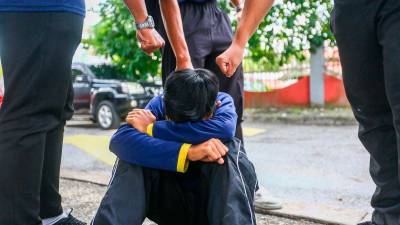PETALING JAYA: Bullying in Malaysian schools is once again under the spotlight after a string of high-profile cases, with some ending in serious injury and even death.
A former perpetrator told theSun that his past actions stemmed largely from peer pressure and a failure to grasp the harm caused.
The ex-bully, who asked to be known only as Abu, admitted that he joined in bullying more than a decade ago.
The 25-year-old engineering diploma graduate, now working as a cook in Kota Bharu, said his first brush with bullying came at the age of 10, when he and classmates singled out a boy branded as “soft” for often befriending girls.
“We hid his belongings, tore his books; petty things, but still wrong. We did it so often that he burst into tears, which got his parents and teachers involved,” recalled Abu.
His behaviour stopped in early secondary school after he and several friends were reported to the discipline teacher.
Reflecting on his actions, Abu said peer influence was the main driver.
“Since everyone was harassing the boy, I joined in just to blend in. Looking back, I truly regret it. If I could, I would meet him to apologise. Even if he wanted to retaliate, I would accept it as part of taking ownership of my wrongdoing,” he said.
He urged today’s students to think about the damage they could cause.
“It is not just a joke or a phase. What you do could scar someone for life. Put yourself in their shoes. Would you want to be treated that way?”
In light of rising cases of bullying in schools, theSun spoke to education experts about whether current disciplinary methods are working and what changes are needed.
Universiti Kebangsaan Malaysia education expert Dr Anuar Ahmad said bullying should be treated as a behavioural issue shaped over time, often by family environment.
Students raised in respectful households are less likely to be aggressive whereas negative patterns at home could influence how they treat peers at school, he said.
He noted that the “soft approach”, such as counselling, consistent guidance and moral reinforcement, could work if applied daily by teachers, wardens and principals.
“When soft measures fail, the education system does allow more serious disciplinary action, including regulated physical punishment within guidelines,” he said, cautioning that such punishment should remain a last resort to avoid resentment or disengagement.
“We need to build a positive school culture in which students feel valued and respected. Those with a sense of belonging are far less likely to bully others.”
Universiti Teknologi Malaysia education policy expert Dr Roslizam Hassan shared similar views, preferring to call the preventive method a hikmah or wise approach, involving ongoing awareness programmes on respect, compassion and the consequences of bullying.
He stressed that prevention works best before incidents occur.
“Once bullying happens, schools and authorities must investigate thoroughly and take firm action, including referring criminal cases to police.
“Parents should instil respect and empathy at home from an early age, and teach children to accept differences among peers to reduce prejudice and verbal harassment that could escalate into physical bullying,” he said.
Both experts agreed that rehabilitation is possible in non-severe cases through targeted counselling, structured school programmes and community activities that foster empathy and social responsibility.
